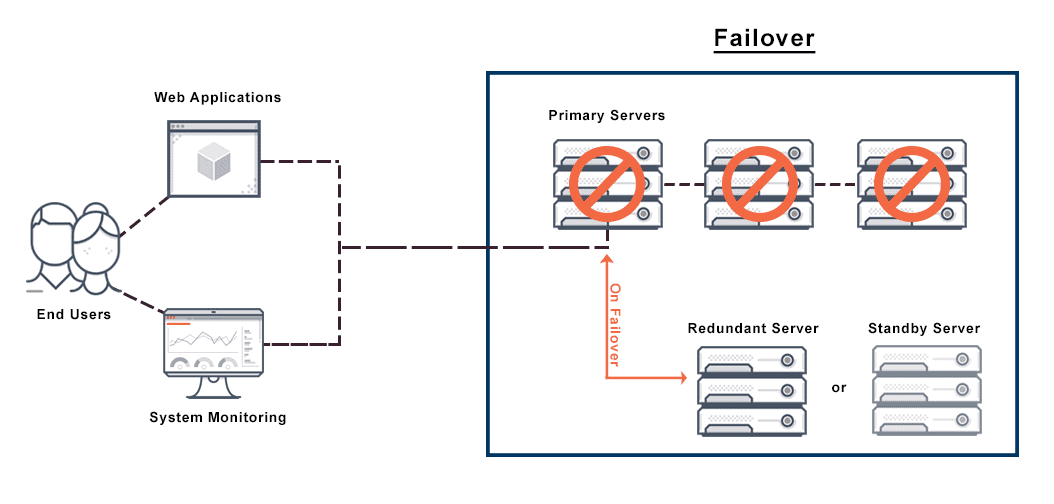Imagine navigating through a maze where every twist and turn is designed to bring you closer to the...
Best Practices for CDN Redundancy and Failover
Imagine you're in the middle of binging your favorite series, and suddenly, the video stops. Or you're managing a high-traffic e-commerce site during a sales event, and the site goes down. These scenarios highlight the importance of redundancy and failover mechanisms in Content Delivery Networks (CDNs).
Why Redundancy and Failover are Essential
CDNs distribute content across multiple servers worldwide to minimize latency and ensure fast, reliable content delivery. However, no system is foolproof. Network failures, server outages, and cyber-attacks can disrupt content delivery. Implementing redundancy and failover strategies mitigates these risks, ensuring continuous availability of your content even when part of the system fails.

Types of Redundancy in CDNs
Server Redundancy
Server redundancy involves deploying multiple servers to handle content requests. If one server goes down, others can take over, ensuring uninterrupted service. Load balancers distribute traffic evenly across servers to optimize performance and minimize overload.
Network Redundancy
Incorporating multiple network paths reduces dependency on a single route. Should a network path fail, alternative routes ensure content delivery continues without disruption. This approach enhances overall reliability and performance.
Geographic Redundancy
Deploying data centers in various geographic locations helps disperse content closer to end-users, reducing latency and improving access speeds. Geographic redundancy ensures that even if an entire region experiences an outage, other locations can maintain service continuity.
Best Practices for Implementing CDN Redundancy and Failover
1. Use a Combination of Redundancy Strategies
Combining server, network, and geographic redundancy maximizes uptime and reliability. For example, using multiple servers across different locations with diverse network paths ensures that your content delivery is resilient to various types of failures.
2. Regularly Test Failover Mechanisms
Regularly testing failover procedures ensures they work as expected during an actual outage. Simulate various failure scenarios to identify weaknesses and improve your failover processes.
3. Implement Traffic Management Policies
Use sophisticated traffic management policies to direct users to the best-performing servers or network paths. These policies can dynamically route traffic based on real-time performance data, ensuring optimal user experience even during partial outages.
4. Monitor and Analyze Performance
Continuous monitoring of CDN performance helps detect issues before they affect users. Utilize analytics to gain insights into traffic patterns, server health, and network performance. This proactive approach enables quick responses to emerging problems.
5. Ensure Security Redundancy
Redundant security measures protect against cyber threats. Implement multi-layered security protocols, such as DDoS protection and traffic encryption, to safeguard your content delivery infrastructure from attacks.
Leveraging Modern CDN Features for Failover
Modern CDNs offer advanced features that simplify redundancy and failover management. Here are some key features to utilize:
Multi-CDN Strategy
Using multiple CDNs from different providers ensures that if one CDN experiences an outage, others can maintain service. This strategy improves reliability and reduces dependency on a single provider. BlazingCDN, for example, offers custom enterprise CDN infrastructure solutions that can be integrated into a multi-CDN strategy for enhanced reliability and performance.
Real-Time Failover
Real-time failover mechanisms automatically reroute traffic to alternative servers or networks in response to failures. These automated responses minimize downtime and ensure seamless content delivery.
Dynamic Content Acceleration
Dynamic content acceleration technologies adapt to changing network conditions, optimizing content delivery based on real-time performance metrics. This flexibility enhances user experience even during high-traffic periods or partial outages.
The Future of CDN Redundancy and Failover
The evolving landscape of digital content consumption demands increasingly sophisticated redundancy and failover solutions. Emerging technologies, such as edge computing and AI-driven traffic management, promise to further enhance CDN resilience and performance.
Edge computing brings content closer to end-users by processing data at the network's edge, reducing latency and improving reliability. AI-driven traffic management uses machine learning algorithms to predict and respond to network issues dynamically, ensuring optimal content delivery.
As digital infrastructure continues to evolve, staying ahead of the curve with advanced redundancy and failover strategies will be crucial for maintaining uninterrupted content delivery. The responsibility now lies with businesses to implement these best practices, leveraging new technologies and constantly innovating their approaches to meet the ever-growing demand for reliable and fast content access.
To explore how you can integrate these best practices into your CDN strategy and discover advanced CDN solutions, visit BlazingCDN.


